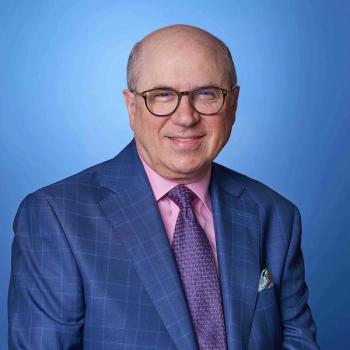
- Psychiatric Times Vol 20 No 6
- Volume 20
- Issue 6
Psychiatrists Strive to Assure Patients' Safety
In the wake of the report issued by the Institute of Medicine detailing the number of medical errors each year, the American Psychiatric Association has issued a set of patient safety recommendations. Will these recommendations reduce the number of psychiatric patient deaths and injuries?
When the Institute of Medicine released the first of its reports on patient safety in 1999, it fell like a bombshell on the medical community. For the first time, the risk to patients in therapeutic settings had been quantified and laid out for public inspection.
That study, based on extrapolations, projected:
At least 44,000 Americans die each year as a result of medical errors [and] ... the number may be as high as 98,000. Even when using the lower estimate, deaths due to medical errors exceed the number attributable to the 8th-leading cause of death. More people die in a given year as a result of medical errors than from motor vehicle accidents (43,458), breast cancer (42,297), or AIDS (16,516).
In addition, the costs of preventable adverse events were estimated to be between $17 billion and $29 billion, with health care costs representing just over one-half of that figure.
The American Psychiatric Association appointed a task force to explore how errors impact psychiatric patients and what steps could be taken to improve the safety level of patient care. The task force presented a report that was approved by the APA board of trustees in November 2002 and by the assembly executive committee in January 2003. This year the APA is moving ahead with a three-pronged approach to minimize adverse events with the appointment of a committee to implement its recommendations. In some ways, the emphasis on safety is not new to the APA.
"Some parts of our patient safety concerns are issues that are more or less unique to psychiatry and that we have been dealing with for years," Paul Appelbaum, M.D., immediate past president of the APA, told Psychiatric Times. "For example, we have been concerned with the issue of patients hurting themselves, and that has led to development of standards for windows that don't break, shower rods that do break and so on. We've been way ahead of the field in this area, and our efforts predate the current patient safety movement."
"I want to be ambitious about this," said Alfred Herzog, M.D., vice president of medical affairs at Hartford Hospital. Herzog, who co-chaired the task force and is chairing the new committee, told PT, "I want us to make a difference, to have this be--in a positive way--that grain of sand in the oyster, to keep the pressure on, to have some pearls happen out of this, to have all of us buying into the patient safety culture."
The task force, which Herzog co-chaired with Miles F. Shore, M.D., put forth 10 recommendations in its report that were approved by the APA Board of Trustees. These recommendations ranged from designating patient safety as a major programmatic priority for the association to encouraging the American Association of Directors of Psychiatric Residency Training to develop curricula that include safety instruction.
This year, the new APA committee will focus on three primary areas of concern: preventable adverse medication events, restraints and seclusion, and patient suicides.
"We don't mean to limit our interest to those three areas," Herzog said. "We'd rather try to accomplish some specific goals than kick off the program with an unachievable goal like solve world hunger. We will try to accomplish three things first."
According to the task force report, the issue of medication errors is common to virtually all of medicine. It cited a study by the Leapfrog Group, a consortium of businesses that purchase health services, showing that "nearly one million serious medication incidents occur annually in the U.S. and ... nearly half of them may be preventable."
These errors include dispensing the wrong drugs, administering drugs to the wrong patient, selecting the wrong route of administration, or administering the wrong dose or amount.
David Bates, M.D., chief of the division of general medicine at Brigham and Women's Hospital in Boston, met with the committee and reported his research into the field of medication errors. He defined a medication error as related to the "processes of ordering, transcribing, dispensing, administering, or monitoring medications, irrespective of their outcome, which brings to bear close call events as well as injurious errors."
Bates and his colleagues studied medication errors at a psychiatric facility in the Northeast and found:
Excessive use of antipsychotics and polypharmacy leading to confusion in diagnosing organic versus pharmacological cognitive impairment. In addition, research investigators uncovered failures to achieve ictal threshold with [electroconvulsive therapy] because of competing medications in the body, as well as the dispensing of lethal amounts of drugs to potentially suicidal patients. The error rate was 7%, and nearly a third of these were preventable.
The Leapfrog Group and other safety-minded organizations have called for installation and implementation of computerized physician order entry (CPOE) systems, which are designed to provide checks on the administration of medications. Hospitals and other institutions have been reluctant to accede to Leapfrog's demands, citing both cost issues at a time when revenues and margins are constricted and concerns over the medical malpractice implications of installing computerized systems.
An article in the journal Health Affairs expressed concern, stating, "Efforts by aggressive malpractice attorneys could rapidly transform Leapfrog's safety standards from marketplace advantages for compliant hospitals to performance expectations required by law."
The APA's task force, while reporting positively on the advantages of CPOE, suggested examining other types of automated monitoring systems, including personal computer- and personal digital assistant-based programs. "Clearly the trend is toward automation, streamlining data entry and supporting clinical reasoning," the report stated. "Psychiatry can benefit from the steep wave of momentum dedicated to this area already."
In the area of seclusion and restraint, the task force cited studies showing that between 50 and 150 "patient deaths occur annually as a result of seclusion and restraint and most go unreported." New standards have been adopted by the Joint Commission on the Accreditation of Healthcare Organizations (JCAHO) and the Centers for Medicare & Medicaid Services (CMS) aimed at reducing the use of restraint and seclusion.
However, the task force report stated, "Clinical culture is the issue," and "All [levels of staff] have to believe in this minimization approach and need the assurance that physical safety will be optimized despite the restricted use of force with patients." The report also noted, "Since 1992, the use of restraints in all settings decreased from more than 13,000 hours per calendar year (5,000 patients) to 6.25 hours for the month of March 2002 (approximately 2,500 patients)."
The report also pointed out, "The use of modern, atypical antipsychotics has offered opportunity for improved management" of patients without the use of seclusion and restraint.
The third area chosen by the committee for this year's program efforts was suicide, which the task force report noted is the eighth leading cause of death in the United States. "Each day 86 of the 1,500 who attempt suicide die trying," the report stated.
According to JCAHO, a number of protocol deficiencies that can be improved can be found in hospital-based suicides. These include incomplete or inadequate suicide assessment methods, incomplete reassessment, incomplete orientation and training of staff or inadequate staffing levels, incomplete or infrequent patient observations, incomplete communication among caregivers or unavailable information, and inadequate care planning.
The report emphasized the need for assessment and reassessment protocols to prevent suicide, citing from Douglas Jacobs, M.D., chair of the work group to develop an APA practice guideline on treatment of patients with suicidal behaviors:
Data indicate that 50% of individuals who complete suicide are in psychiatric treatment at the time: 10% are inpatients, and 5-10% are post-hospital discharge In an analysis of records of 100 patients who committed suicide in a hospital, Dr. Jacobs and his colleague found that 77% denied suicidal intent in their last communication with staff. This emphasizes the need for improved assessment and reassessment protocols.
In addition to making progress in these three areas, Herzog explained to PT that he believes that a culture change will be necessary for psychiatry in particular and health care in general to improve patient safety levels.
"We have to get away from the tendency to blame. We need to set up patient safety processes--it's a process issue, a design issue, not an individual blame issue. That sounds easy, but it will be hard as hell because doctors have been so trained in a blaming culture that we give it back as we get out into training. It's instilled in the way doctors are trained."
It is not just doctors who are imbued with a sense of blame. This same sense is also in the social and legal structure surrounding health care. James B. Battles, Ph.D, M.D., serves as coordinator for the Patient Safety Task Force within CMS. This task force is charged with establishing the means for health care agencies and providers to report errors and error-causing situations so that others in the system can learn from them and prevent them in the future.
"We face some real cultural problems," he told PT. "To be a health professional, you cannot make errors or be negligent. The term 'simple negligence' in law equates human error with harm, which the law attempts to make whole. We have tended to stretch the term 'negligence' way beyond its true meaning. If to err is human, and to err is to cause harm, then you can't be a human being and be a health professional. We have to re-examine that policy. We are moving to a just culture."
Battles, a senior service fellow with the Agency for Healthcare Research and Quality, explained that the CMS task force is working on a national reporting system using an Internet-based interface that will be ready for rollout later this year. "The system is designed to accommodate the ability for individual practitioners to report directly. We want to encourage direct reporting by practitioners."
One of the concerns in the way the data are collected and evaluated, he explained, is making sure that people who report errors are protected. "Nothing will change. The data will be as protected as they are now. Within these systems, there will be a mix of both voluntary and mandatory reporting systems. The data are protected by current statutes and the rules of the parent agencies. Some of it may discoverable, but in a redacted manner. We're not adding or subtracting any of protection rules that currently exist."
Herzog agreed that increased reporting will be a key to improving the culture of safety, but he recognized the dangers as well. "We have a genuine professional liability crisis," he said. "On the other hand, there is a demand for increased accountability by the public. If the information we provide is misused, it becomes a lawyers' feast. Our task is to figure out how do we balance those needs and ultimately do it right."
Articles in this issue
over 22 years ago
After the Famous Poetover 22 years ago
Confidentiality Under Fireover 22 years ago
Stigma Continues in Hollywoodover 22 years ago
The Art of the Unconsciousover 22 years ago
Conference Probes Pathology of Self-Awarenessover 22 years ago
Music Therapy With Emotionally Disturbed Childrenover 22 years ago
The Assessment of Danger in Everyday Practiceover 22 years ago
The Other Side of the Storyover 22 years ago
Using Creativity to Explore in PsychotherapyNewsletter
Receive trusted psychiatric news, expert analysis, and clinical insights — subscribe today to support your practice and your patients.















